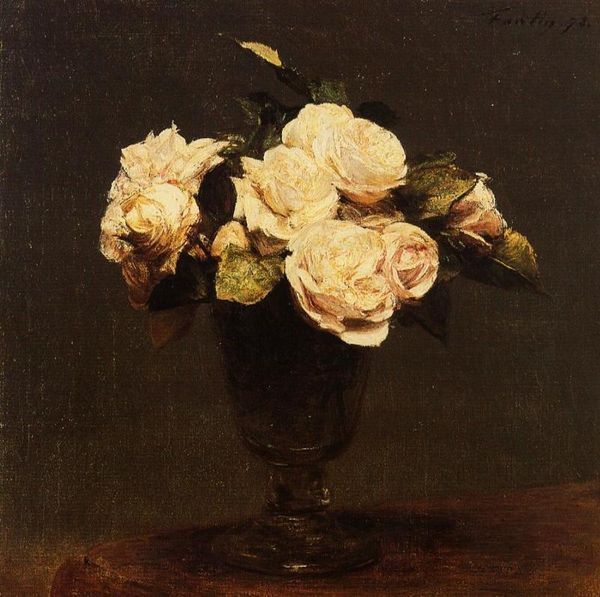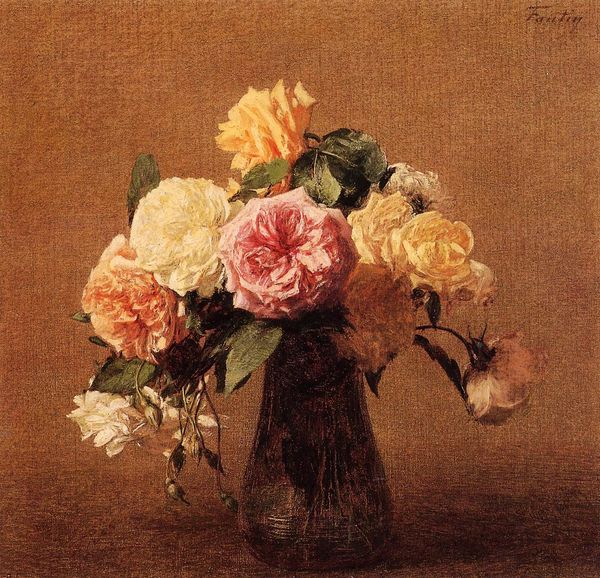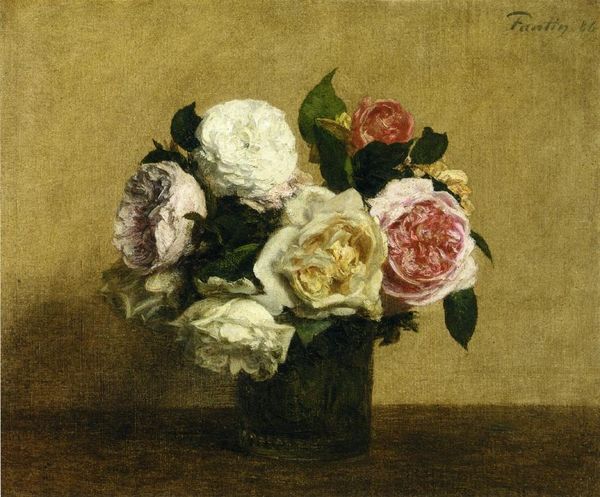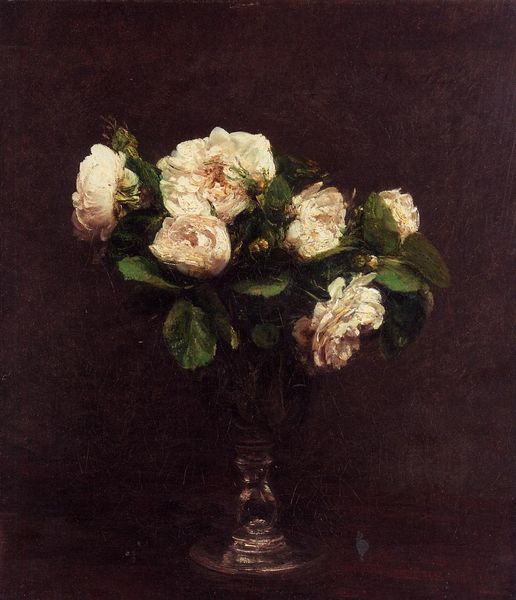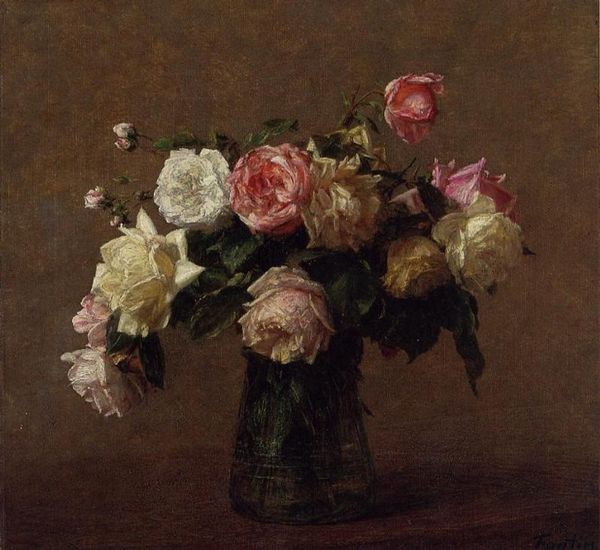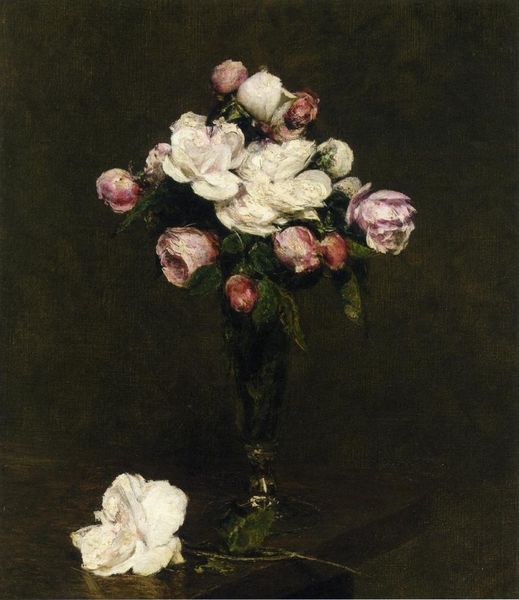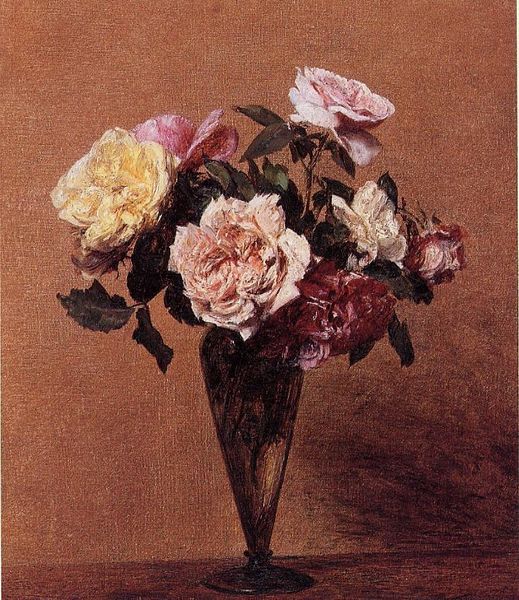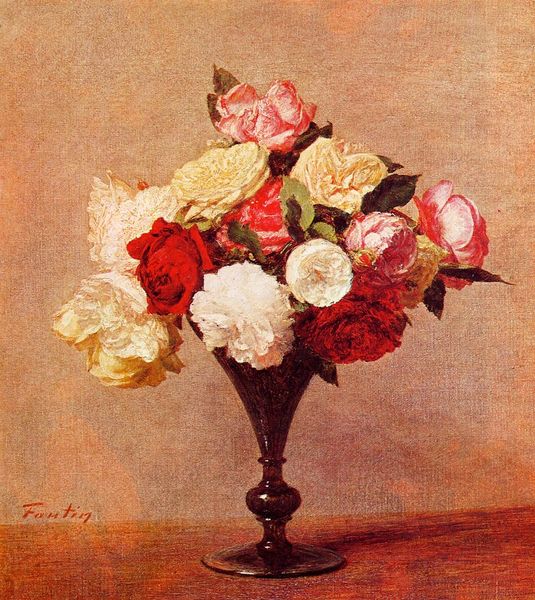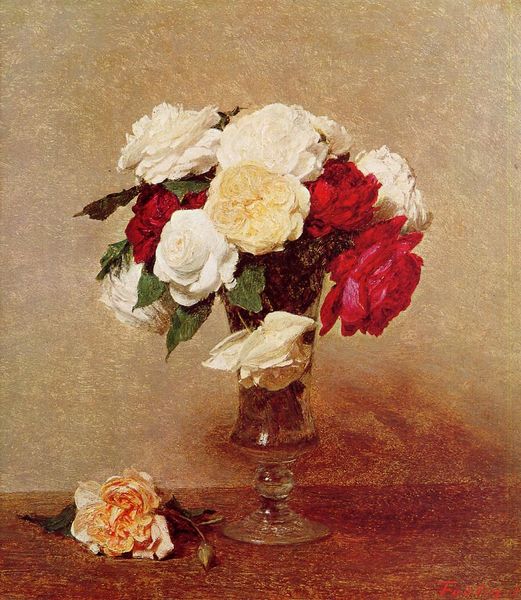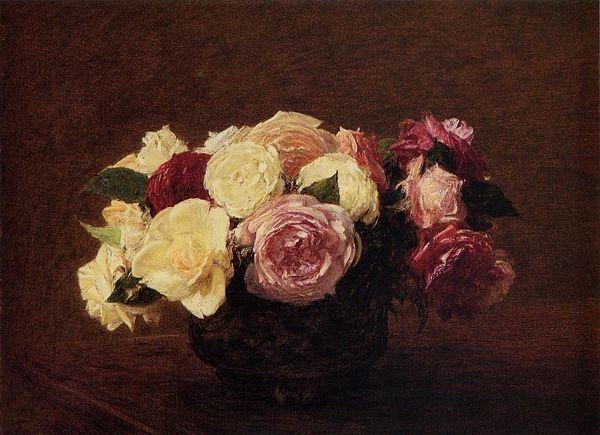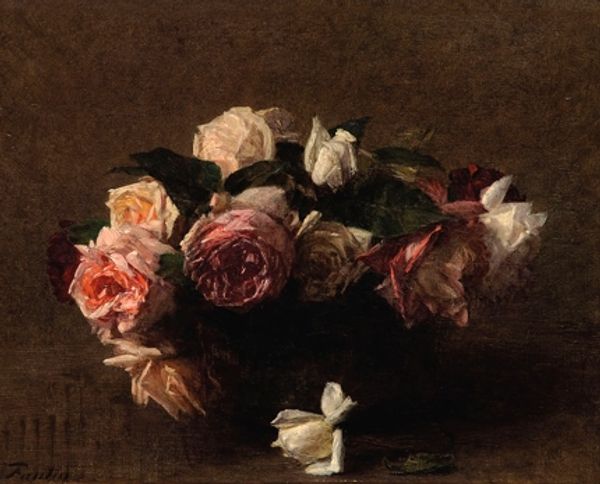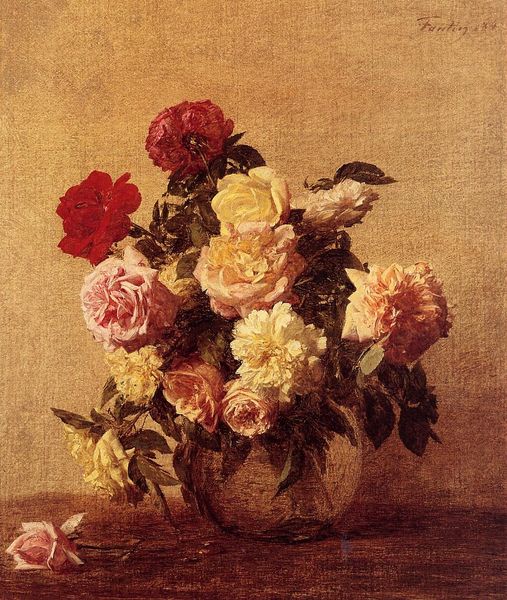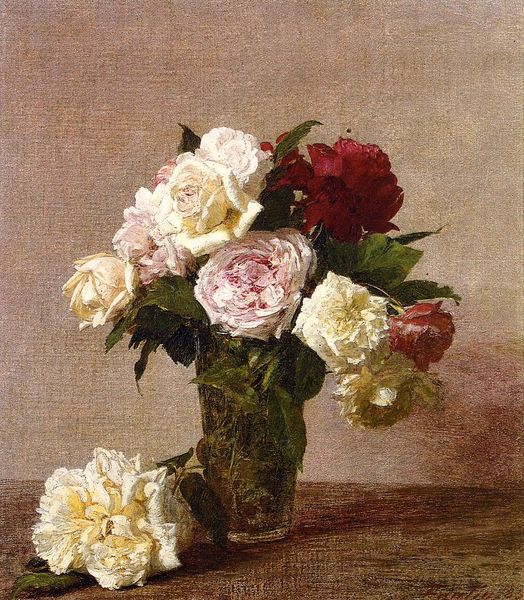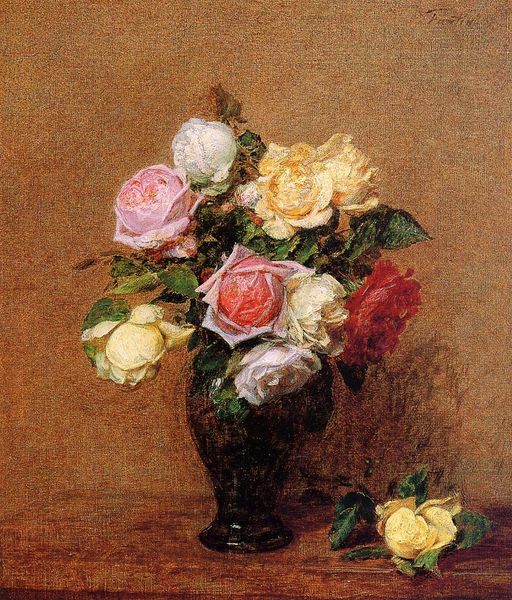
painting, oil-paint, porcelain, photography
#
still-life
#
painting
#
impressionism
#
oil-paint
#
flower
#
porcelain
#
photography
#
oil painting
Copyright: Public domain
Curator: Henri Fantin-Latour, best known for his flower paintings, captured this particular bunch in his 1874 still-life titled "Roses in a White Porcelain Vase." Editor: The first thing that strikes me is the tension between the wilting roses and the rigid formality of the vase. It’s like life contained, and not quite successfully, by artifice. Curator: It’s important to consider Fantin-Latour's artistic and social circle at the time. He moved amongst the Realist painters like Courbet, and yet aligned with the more radical Impressionists later on, a move which shaped both his exhibitions at the Salon and his growing clientele. There was a significant market then, and now, for floral still lifes. Editor: The texture of the paint, that scumbled background—it’s almost aggressively un-smooth. Compared to the precise rendering of the porcelain, the brushstrokes convey the temporality, the fading beauty of the blossoms so brilliantly. And that lone cluster of flowers cast casually at the base feels almost deliberately disruptive. Curator: Disruptive maybe, but these choices cemented the idea of "naturalism" as fashionable within the Parisian upper-middle class, who would use such paintings as calling cards of good taste, announcing an appreciation for the "real," not simply classical allegory. It speaks volumes, really, about the changing status of art within consumer culture. Editor: I agree, but also think the interplay of light and shadow can't be ignored. Note how the arrangement has weight, volume, but it’s so subtly done, softening the severe darkness around it, providing depth and drawing the eye towards that creamy palette. He’s mastered conveying depth with understated elegance. Curator: That understated elegance became synonymous with modern taste and artistic freedom for generations. His ability to synthesize academic and avant-garde trends speaks volumes about the public role of art. Editor: True, and while he occupied a particular point in history, there is still a lot to appreciate about this artwork's form; the structure gives it strength, and the roses have an intimate softness to them. Curator: A perfect example of how to merge tradition with new sentiments. I find that fascinating still today. Editor: A delightful moment captured.
Comments
No comments
Be the first to comment and join the conversation on the ultimate creative platform.
